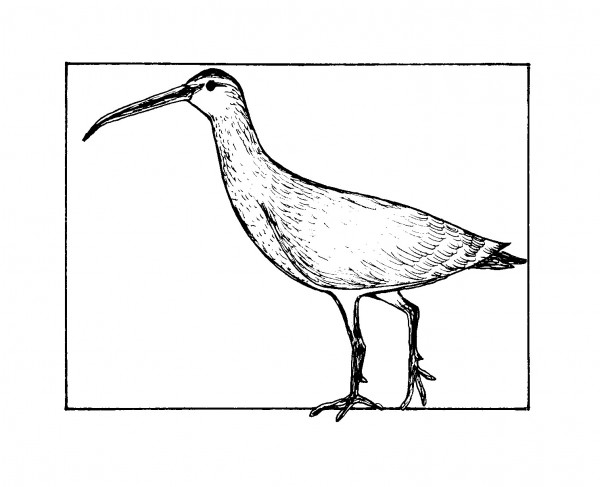Wandering Whimbrel

Whimbrels (Numenius phaeopus) are still being spotted in several coves in Laguna Beach and this may be your last chance to observe them before they leave for their summer breeding grounds. A distinctive bird, the whimbrel is a large shorebird that can reach 19 inches in height with a long, dark brown, downward curving bill. Having a long neck and long gray legs, the mottled bird has marbled grayish-brown feathers that lighten to a marbled buff color on its belly. The top of its head is dark brown and there is a dark eye stripe within the light face. The average lifespan is 11years although there are a few documented examples of them living 25 years.

With a large migration range between the arctic region of North America and Eurasia to the coastal areas of six continents, including North and South America, Europe, Africa, South Asia and Australia, it is one of the most wide-ranging shorebirds. Reaching sexual maturity at 2 years, they spend the breeding season of April through August in arctic and sub arctic areas, forming loose colonies. Once they pair up, the nests are built on the ground in depressions located in the hummocky tundra. Females line the nest with vegetation and lay three to four eggs that are incubated for up to 28 days by both parents. Within hours of hatching, the chicks leave the nest. But both parents are very protective as they tend the young for the next month. Whimbrels leave the summering grounds in July through September with the females leaving first and the males following after the first of the young leave at about four to six weeks of age. Able to fly non-stop up to 2,500 miles, the whimbrels arrive at their wintering grounds in the temperate and tropical beaches, rocky shores, marshes and coastal wetlands.
Whimbrels are ground foragers and feed on a variety of items depending on location. In the summer breeding grounds, they eat insects, mollusks such as slugs and snails, seeds and berries. When in their coastal wintering grounds, their diet changes to crustaceans such as shrimp and crab, small marine mollusks, marine worms and occasionally small fish. Prey is located visually. In Laguna, the whimbrel wanders up and down the water line, retrieving items from the surface of the wet sand as well as using their long curved bill to probe under the surface of the sand.
Predators include some birds, particularly large birds of prey, foxes and humans. Whimbrels are still actively hunted for sport and food in parts of the Caribbean, South America and Asia. Habitat loss of their nesting sites, resting points on their migration routes and coastal wetlands currently pose the highest risk to the species. Over the last 40 years, the overall whimbrel population has been steadily decreasing. However, because of the worldwide distribution of the species, the bird does not yet approach the threshold of a vulnerable species designation. In 2014, the bird was placed on the state of the birds watch list as a species in danger of extinction without significant conservation action.
Artist Jan Sattler and Mia Davidson are residents of Laguna Beach and year-round ocean swimmers who want to remind you that Laguna Beach is a state marine reserve, where collecting or fishing is forbidden.




